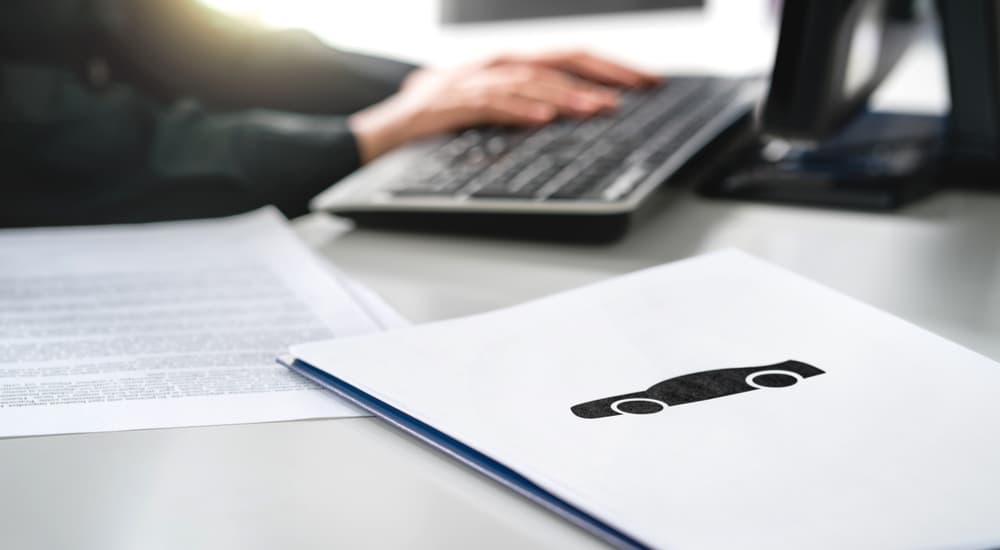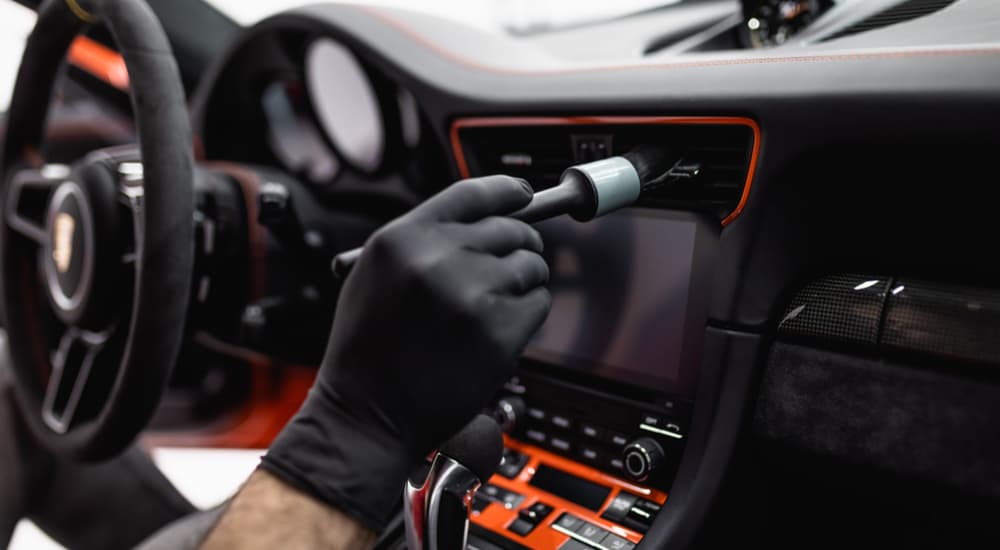Even the most well-built cars don’t last forever, and with new features coming out all the time, it’s easy to see why many drivers replace their car every few years or so. Of course, this is a two-part process: selling your current car and buying a new one. Trading in your car at a dealership means you can do both of these steps in the same place, saving you time and effort. Before you bring your vehicle in to value your trade, there are some things that you can do to give yourself a leg up.
Detailing your car before you trade it in is a great way to raise the value of your trade-in and get a better deal on your new car. If you want to learn more about why that is and how you can get the most out of a trade-in, let’s take a closer look at how trading a car in works. Then, find out what you can do to prepare.
What’s a Trade-in?
If you trade your car in at a dealership, you’re basically offering up the value of your current car as credit against the purchase of your new car. The more valuable your old vehicle is, the less you’ll have to pay for the new one. That’s why it’s important to do everything you can to make sure your vehicle is in the best condition possible before you trade it in.
Why Should I Trade in My Car?
Selling a car is a complicated process and even under the best circumstances, it can take a lot of time and effort to get done. Plus, some platforms have fees for listing and selling, which can eat into your profits. If you go through a free option like Craigslist, you have to deal directly with strangers and can risk falling for a scam or giving your personal information out to the wrong person.
Trading your car in at the dealership is a much more straightforward process. Unlike strangers on Craigslist, the staff at a car dealership have ample experience buying cars and can confidently work with you to make a deal that satisfies everyone.

When Should I Trade in My Car?
There are a lot of different reasons why it might be time for you to trade your current car in for a new one. If the costs of maintaining your car are getting too high, then it might be time to cut your losses and move on to something new.
But just because your vehicle is still in good working order doesn’t mean it’s still right for you. If you have a small car and are about to start a family, it may be time to trade it in for a minivan. Or if you’ve switched to a job with a longer commute, it might be wise to trade in that SUV for a more fuel-efficient vehicle. Whatever the reason, once your current vehicle no longer feels right for you, it’s time to start looking into trading it in for something that’s a better fit.
If you own your car free and clear, it certainly makes the trade-in process easier. However, don’t think that you need to wait until you’ve fully paid off your auto loan in order to trade in your vehicle. Trading in a car that you still owe payments on is actually a pretty common practice. Basically, the value of your current car will be subtracted from the price of your new car, then any remaining balance on the loan will be added to your new loan.
That seems pretty straightforward, but it can get complicated; some lenders charge penalties for paying out loans early. Then there’s the issue of interest rates. Luckily, dealerships usually have finance departments staffed with experts who can answer any questions you have and walk you through each step of the process to get a solid deal.
Why Should I Detail My Car Before a Trade-In?
When people are shopping for a used car, they prefer clean vehicles that have been well maintained by the previous owner. The folks at a dealership know this and are taking it into consideration when they appraise your trade-in. So you want your car to look (and smell) as nice as possible in order to get the best value you can.
How Do I Detail My Car?
The fastest and easiest way to get your car detailed is to take it to professionals. A business that specializes in auto detailing knows how to get into all the cracks and gaps and make your car look good as new. But if you have some extra time on your hands and are looking to save a bit of money, you can also detail it yourself. Plenty of stores sell car detailing kits, so you can get the cleaning solutions and tools you need all at once.
Before you break out the cleaning supplies, you’ll want to clear out the interior of the vehicle. Throw away any old wrappers, shred those receipts, and move your personal belongings out. Then you can start cleaning the interior. Use compressed air or detailing putty to clear out dust inside the air vents and in any small cracks in the dashboard. You’ll want to get a spray bottle full of interior cleaner to wipe down any surfaces. If you have cloth seats, a stain remover can get rid of unsightly discoloration.
Once the inside is looking fresh, you can start on the wheels and tires. You can use simple soap and water to wash off any dirt or grease, then use a rag or microfiber cloth to apply a protective wheel cleaner to the rims.
After the wheels, you can move on to the big job: the body. Take on small sections at a time, scrubbing with auto body soap and then rinsing it off right after to avoid getting streaks. Consider waxing and buffing the body as well.

What Else Should I Do Before a Trade-In?
If you really want to boost your odds of getting the maximum value for your trade-in, consider getting some minor repairs done. Things like fixing windshield damage or replacing burned-out lights can make your car look far better to someone inspecting it. Of course, you want to make sure you’re not spending more money than you’ll get back. Look for small, cosmetic issues that aren’t too expensive to repair.
Remember, any value you get for your trade-in is instant savings on your new car purchase. Not only can it bring down what you pay upfront, it can also make your monthly payments more affordable. So do whatever you can to make your trade-in as appealing as possible by making sure it looks, sounds, and smells its best.
Some Final Thoughts
Trading your car in at a dealership tends to be much easier than selling it yourself, but there are still some extra steps you can take to get the best value possible. Detailing your car is one of the best and most cost-effective ways to make your car ready for an appraisal. Since dealers know that customers prefer nice, clean cars, appearance can make a big difference in what your trade-in’s value is. So if you’re looking to upgrade to a new car soon, either take your vehicle into a detailing service or break out the cleaning supplies and get to work. Your wallet will thank you.



